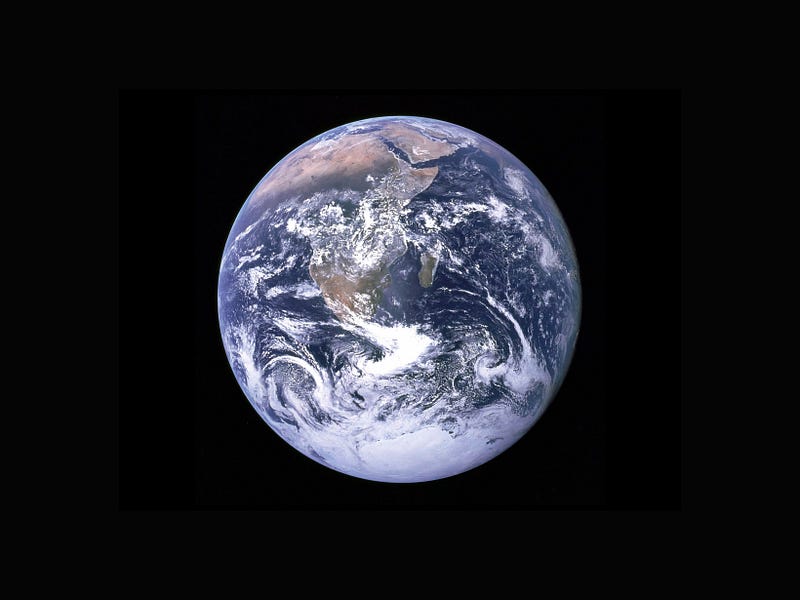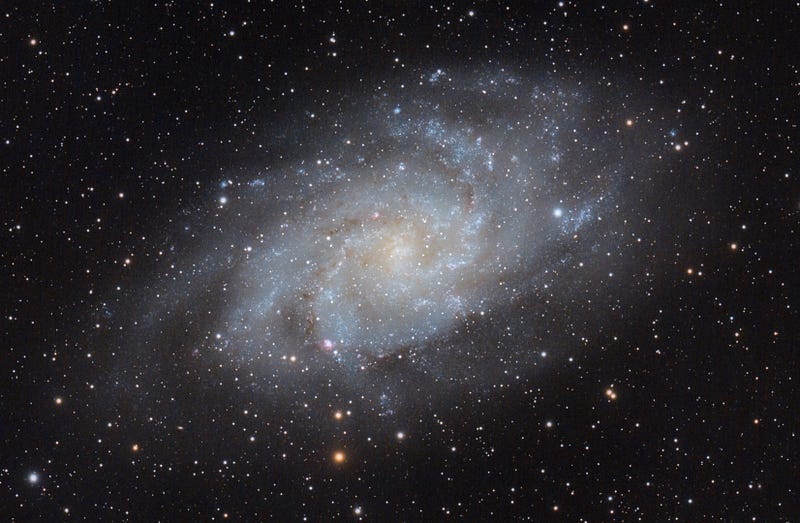Exploring the Incomprehensible Vastness of Space and the Universe
Written on
Chapter 1: The Enormity of Space
Space has always intrigued me, perhaps due to my childhood fascination with sci-fi shows like Star Trek. The vastness of the universe and the mysteries it holds are truly astounding. While we may never fully grasp the existence of life in distant solar systems or galaxies, we do have knowledge about the celestial entities surrounding us and their staggering distances. These measurements can be difficult for us to comprehend.
The Earth and Moon
To illustrate, the Earth has a circumference of approximately 24,900 miles at the equator, which means the farthest distance one can be from another person on Earth is about 12,450 miles. In contrast, the moon orbits an average of 239,000 miles away, which is nearly 19 times that distance. It's important to note that this average varies between 225,000 and 252,000 miles due to the moon's elliptical orbit. Thus, while the moon seems quite distant, in the vastness of space, it is relatively close.

The Sun
Our closest star, the sun, is situated about 93 million miles from Earth. Light from the sun travels at an astonishing speed of 186,000 miles per second, yet it still takes about eight minutes and 20 seconds to reach us. Therefore, when we observe the sun, we are actually seeing it as it was eight minutes and 20 seconds earlier. The sun, a massive sphere composed of superheated gases, is so large that if it were hollow, it could contain over a million Earths.
The Stars
Following the sun, Proxima Centauri stands as our nearest star, located 4.25 light-years away, which translates to approximately 25 trillion miles. This means that the light we see from Proxima Centauri has taken 4.25 years to reach us. Interestingly, four light-years represents the average distance between stars in our galaxy, suggesting that much of our galaxy—and indeed the universe—is filled with empty space.
While our sun is categorized as an average-sized star, it is larger than more than 90% of stars in our galaxy. However, there exist stars far larger than our sun. Here are some examples:
- Sirius A: Located 8.6 light-years away, this star is nearly twice the diameter of our sun and shines as the brightest star in the night sky.
- Bellatrix: This blue giant star in the constellation Orion is 5.75 times larger than our sun and lies 245 light-years from Earth.
- Pollux: A giant star in Gemini, Pollux is about 34 light-years away and has a diameter nearly nine times that of our sun.
- Arcturus: A red giant in Boötes, it is situated just under 37 light-years away and has a diameter more than 25 times that of our sun.
- Rigel: This blue supergiant star in Orion boasts a diameter 79 times that of our sun and is 864 light-years distant.
- Pistol Star: A blue hypergiant star, it is about 26,000 light-years away and has a diameter over 300 times greater than our sun.
- Betelgeuse: Also in Orion, this star is located 642 light-years away and has a diameter close to 770 million miles—almost 900 times that of our sun.
- VY Canis Majoris: A red hypergiant in Canis Major, it is nearly 5,000 light-years distant and has a diameter exceeding 1400 times that of our sun.
- Stephenson 2–18: This star, at a distance of about 19,000 light-years, is the largest known star, with a diameter of nearly 1.9 billion miles—2150 times larger than our sun. It could fit 10 billion suns inside it!
These are just a few of the immense stars in our galaxy, with many more yet to be identified.
The Milky Way Galaxy
Our galaxy, known as the Milky Way, spans approximately 105,000 light-years in diameter. It is a barred spiral galaxy, thought to contain around 300 billion stars, with our sun located about 26,000 light-years from its center along one of its spiral arms. At the core lies a supermassive black hole known as Sagittarius A, which has a mass equivalent to four million suns.
The Universe
Surrounding the Milky Way are several dwarf galaxies, while the nearest large galaxy is Andromeda (M31), located about two million light-years away. The Andromeda galaxy is slightly larger than the Milky Way, whereas the Triangulum galaxy (M33), the third largest in our Local Group, is somewhat smaller, with a diameter of about 60,000 light-years, and is 2.73 million light-years away.

The Local Group of galaxies spans roughly 10 million light-years in diameter, with its center located between the Milky Way and Andromeda. Beyond this, the universe extends endlessly, containing hundreds of billions (possibly trillions) of galaxies.
The observable universe measures 93 billion light-years across, allowing us to see out to 46.5 billion light-years. This distance does not imply that light traveled for 46.5 billion years, as the universe is only 13.8 billion years old. The reason we can observe such distances is due to the universe's ongoing expansion, which means light has traveled greater distances over time.
Beyond what we can observe lies the unobservable universe. Its true size remains a mystery, but it could be significantly larger than the portion we can detect. Furthermore, there could be other universes beyond our own. While we may never fully understand it, one thing is certain: the expanse of space and the universe is incomprehensibly vast.
Chapter 2: Mind-Blowing Facts About Space
The first video titled "10 Crazy Facts About Space You Probably Didn't Know" dives into astonishing truths about our universe that may surprise you.
The second video, "Mind-Blowing Facts about the Size of The Universe! | Space Documentary," explores the immense scale of the universe and its unfathomable distances.